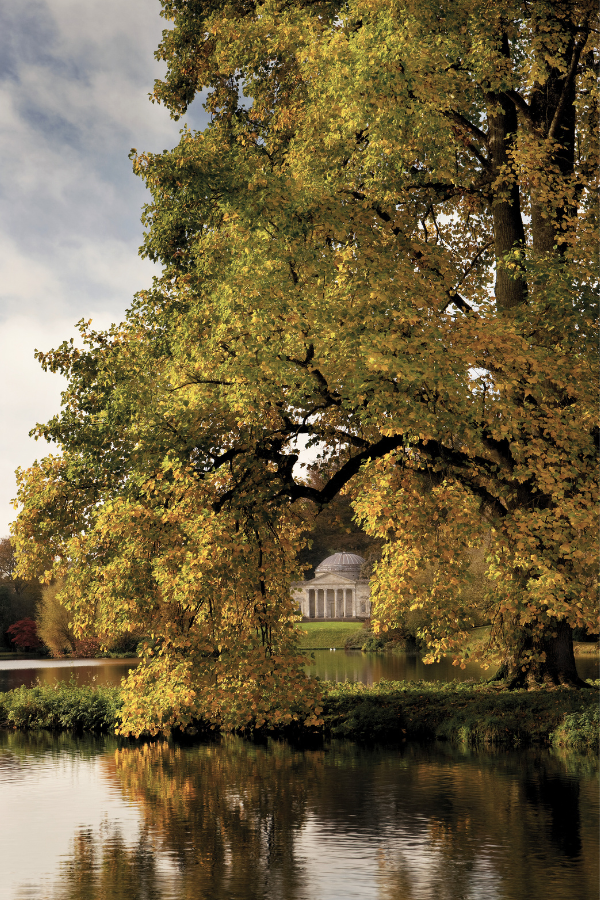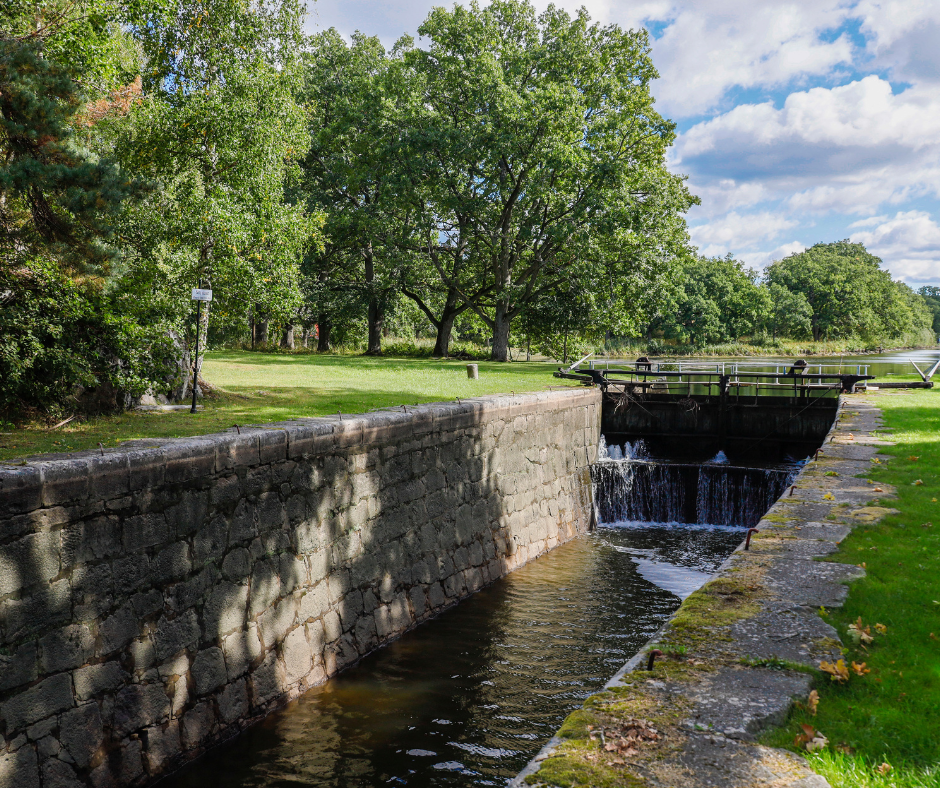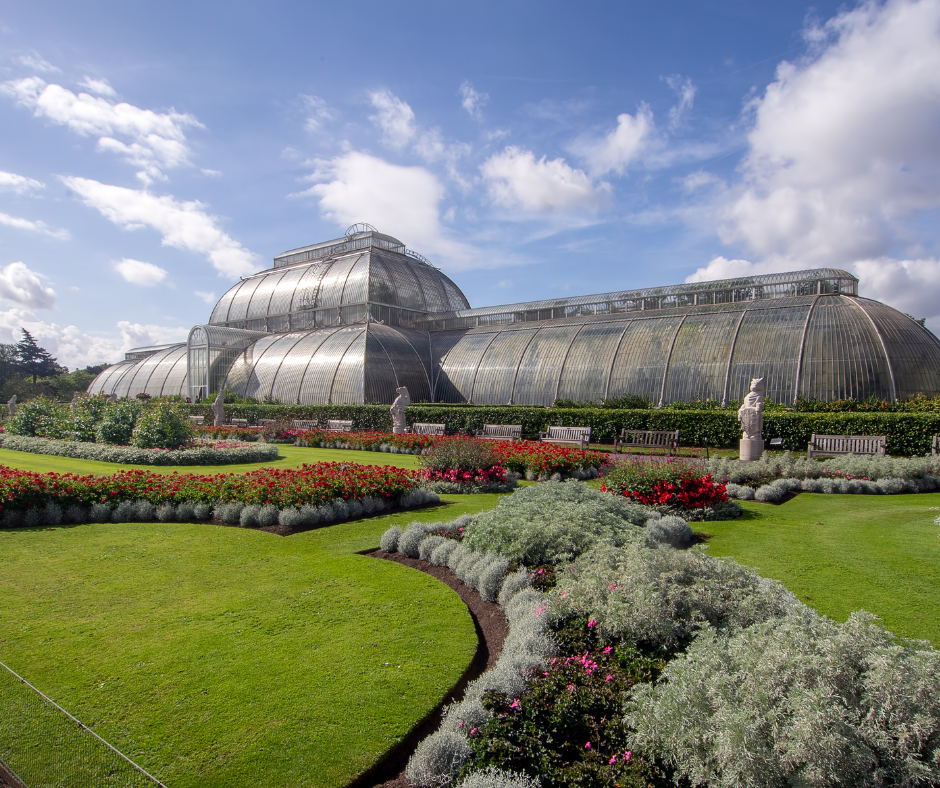
Landscape Architecture Programs: Where to Study, What You’ll Learn, and How to Start Your Career
Summary
Reflection Questions
Journal Prompt
Landscape architecture blends art, science, and environmental stewardship to design and manage outdoor spaces—from urban plazas to national parks. Integral to modern urban and environmental planning, it encompasses a broad spectrum of activities aimed at creating aesthetically pleasing, functional, and sustainable environments. In this article, we will take a look at a few of the top landscape architecture programs in the United States—examining what these programs offer, the key areas of learning they cover, and the systematic pathway they offer for aspiring individuals to become professional landscape architects. By providing an in-depth look at these landscape architecture degrees, we hope to guide prospective students through the educational journey and professional prerequisites essential to shaping future experts in this vital and impactful field.
Landscape Architecture Programs in the USA
The United States boasts a variety of esteemed landscape architecture programs—each offering unique perspectives and strengths in this multifaceted field. These programs—typically housed within universities’ architecture or environmental design schools—provide a comprehensive education that combines theoretical knowledge with practical application.
The curricula are designed to cover a wide array of topics—from ecological design and site planning to landscape history and urban development. Many programs also emphasize sustainability—acknowledging the critical role of landscape architects in addressing environmental challenges.
The diversity of these programs reflects the varied nature of the landscape architecture profession itself and caters to the broad spectrum of interests and career goals within the field.
Criteria for Selecting a Landscape Architecture Program
When choosing a landscape architecture program, several key factors should be considered to ensure the best educational and professional outcome. Accreditation is paramount. Programs accredited by the American Society of Landscape Architects (ASLA) meet established standards and are recognized professionally. Be sure to assess whether programs of interest have been certified by the Landscape Architectural Accreditation Board before making a decision.
Prospective landscape architecture students should also evaluate the curriculum to ensure it aligns with their interests and career goals. Faculty expertise is another crucial factor. Experienced and reputable instructors can provide invaluable knowledge and networking opportunities.
Additionally, resources such as technology, lab facilities, and opportunities for hands-on projects or internships are essential for practical learning. Finally, the program’s connections to the industry and its career placement record can offer insights into post-graduate opportunities.
Highlighting Top Universities and Colleges Offering These Programs, with a Focus on Geographic Diversity
Several top universities and colleges across the United States are renowned for their landscape architecture programs. On the East Coast, Harvard University’s Graduate School of Design and Cornell University offer highly regarded programs with a rich history in the field.
In the Midwest, the University of Michigan and the University of Illinois at Urbana-Champaign are known for their strong curricula and research opportunities. The West Coast features prominent programs at the University of California, Berkeley, and the University of Washington—among others.
These institutions not only provide excellent education but also bring regional characteristics and challenges into their teaching—reflecting the geographic diversity of landscape architecture practices in the USA. This geographical diversity enriches the learning experience, as students gain exposure to a wide range of environmental conditions, urban configurations, and cultural landscapes.
Curriculum and Learning Outcomes

The curriculum in landscape architecture programs typically encompasses a blend of theoretical knowledge and practical skills essential for the profession. Early coursework often includes foundational subjects such as design theory courses, basic design principles, drawing, environmental health, social sciences, and environmental science, establishing a base for more advanced studies.
As students progress, the curriculum delves deeper into complex topics like site engineering and planning, landscape ecology, urban design, and spatial design. Advanced design studios form a core component of the curriculum, where students engage in comprehensive project work that simulates real-world scenarios.
These studios foster creativity and problem-solving skills—encouraging students to develop innovative design solutions. Technical courses in computer-aided design (CAD) and Geographic Information Systems (GIS) are also integral—equipping students with essential tools for modern landscape architecture practice.
Approved courses vary by program, so be sure to check with the Academic Affairs office before selecting a school.
Discussion of Core Subjects
Core subjects in landscape architecture programs are carefully chosen to cover the breadth and depth of the field. These are complemented by elective courses that make up the full professional degree. Design principles form the backbone of the curriculum—teaching students the fundamentals of aesthetic and functional design.
Horticulture, plant, and life sciences are critical, as they provide knowledge about plant characteristics, selection, and the role of vegetation in landscape design. Environmental systems courses cover broader ecological and geological aspects—enabling students to understand and design landscapes that are in harmony with natural systems.
Additional core subjects often include urban and regional planning, landscape history and theory, and construction materials and methods—each contributing to a comprehensive education in landscape architecture. Students are also taught professional ethics as part of their professional education to ensure they conduct themselves accordingly.
Bear in mind that the courses offered will not only depend on the university but also on whether the student applies to graduate programs or undergraduate programs when seeking a landscape architecture degree.
Exploration of Specialized Landscape Architecture Courses and Practical Components
Many landscape architecture programs offer specialized courses that allow students to delve into specific areas of interest. Sustainable design courses, for example, focus on creating landscapes that are environmentally responsible and resource-efficient.
Urban planning integrates landscape architecture with the planning and design of urban spaces—addressing issues like community development and land use planning. Historical landscape preservation is another specialized area—focusing on the conservation and restoration of historic landscapes.
Beyond theoretical and specialized courses, practical components like internships, workshops, and studio work are crucial. Internships provide valuable real-world experience and professional networking opportunities.
Workshops and seminars often bring in industry professionals—offering insights into current trends and challenges in the field. Studio work is a critical component, where students apply their learning in designing comprehensive landscape projects—often collaborating in teams, much like they would in a professional setting.
These practical experiences are vital in preparing students for the demands and realities of a career in landscape architecture.
Master of Landscape Architecture vs. Bachelor of Landscape Architecture
When comparing a Master’s degree in Landscape Architecture (MLA) to a Bachelor’s degree in the same field (BLA or BSLA), there are several key differences to consider. These differences relate to the depth of study, specialization opportunities, career prospects, and prerequisites for enrollment. Let’s take a look.
Depth of Study
Bachelor’s Degree
A BLA or BSLA provides a foundational education in landscape architecture. It covers a broad range of topics—including design principles, site planning, horticulture, environmental systems, and basic technical skills. The bachelor’s program is typically more focused on introducing students to the field and providing them with the essential skills and knowledge to start a career in landscape architecture.
Master’s Degree
An MLA offers a more advanced and in-depth study of landscape architecture. This program often delves deeper into complex design and planning issues, advanced technical skills, and theoretical aspects of the field. Students in a master’s program may engage in more research-oriented, analytical, and conceptual work compared to undergraduate studies.
Specialization Opportunities
Bachelor’s Degree
While offering a comprehensive overview, bachelor’s programs generally have less scope for specialization. The focus is on providing a well-rounded education that covers all fundamental aspects of landscape architecture.
Master’s Degree
MLA programs often provide opportunities for specialization in areas such as environmental design, urban planning, sustainable design, or landscape restoration. This allows students to focus their studies on a particular aspect of landscape architecture that interests them the most.
Career Prospects and Advancement
Bachelor’s Degree
Graduates with a BLA or BSLA are qualified for entry-level positions in landscape architecture firms, government agencies, and other organizations. This degree lays the groundwork for professional practice and is sufficient for most landscape architecture roles.
Master’s Degree
An MLA can open doors to more advanced positions and leadership roles. It may also lead to opportunities in academia, research, and higher-level policy development. For those who have a bachelor’s degree in a different field, earning an MLA can be a pathway to switch careers into landscape architecture.
Prerequisites for Enrollment
Bachelor’s Degree
A Bachelor’s typically requires a high school diploma or equivalent. No prior specialized education in landscape architecture is usually needed.
Master’s Degree
A Master’s often requires a bachelor’s degree, but not always in landscape architecture. For those with an undergraduate degree in another field, MLA programs usually offer foundational courses to cover the basics.
Selecting the Right Program for Your Landscape Studies
While both degrees offer comprehensive education in landscape architecture, a bachelor’s degree is geared more towards foundational learning and preparing students for entry-level roles, whereas a master’s degree provides advanced knowledge, specialization opportunities, and can lead to higher positions in the field.
Each program prepares students differently. The choice between the two degrees depends on one’s career aspirations, educational background, and the level of expertise they wish to attain in the field of landscape architecture.
Required Skills and Competencies Before Establishing a Professional Practice

Landscape architecture programs are designed to develop a diverse set of skills and competencies—vital for success in this multifaceted profession. Creative design skills are at the forefront—enabling students to conceptualize and visualize aesthetic and functional outdoor spaces.
Technical skills are equally important. They include understanding and applying principles of horticulture, environmental sustainability, and construction in landscape design. Environmental awareness is a key competency—involving the understanding of ecological systems and the integration of sustainable practices in design projects.
Analytical skills are honed through the study of environmental systems, site analysis, and land-use planning—allowing students to assess and respond to the specific conditions and challenges of each project.
The Importance of Software Proficiency in Modern Landscape Architecture
Proficiency in various software tools is essential. Computer-aided design (CAD) software is fundamental for creating detailed and accurate design plans. Geographic Information Systems (GIS) are used for mapping and analyzing land use, environmental data, and topography—crucial in large-scale planning and environmental impact assessments.
3D modeling software enhances the ability to create realistic visualizations and presentations of design concepts, which is invaluable in communicating ideas to clients and stakeholders. Mastery of these software tools not only increases efficiency and precision in design work but also ensures that landscape architects remain competitive and relevant in an increasingly technology-driven industry.
Soft Skills Development
Soft skills play a crucial role in the professional life of a landscape architect. Effective communication skills are essential, as landscape architects frequently collaborate with clients, contractors, government agencies, and other professionals. They must be able to articulate design concepts clearly and persuasively—both in writing and verbally.
Project management skills are also vital—encompassing project planning, time management, budgeting, and team coordination. Additionally, problem-solving skills are constantly called upon to address design challenges, site issues, and client requirements.
Development of these soft skills is integrated into landscape architecture programs, often through team-based projects, presentations, and real-world design scenarios. These skills are crucial for successful project implementation and for advancing in a professional career.
Becoming a Landscape Architect
The path to becoming a licensed landscape architect in the USA is structured and requires a combination of education, examination, and practical experience. The first step is obtaining a relevant degree—typically a Bachelor of Landscape Architecture or a Master of Landscape Architecture from an accredited institution. The type of work one wishes to pursue will determine whether undergraduate or graduate degree programs are suitable.
Following education, aspiring landscape architects must gain practical experience—often through internships or entry-level positions, under the guidance of licensed professionals. This experience is crucial for developing practical skills and understanding the day-to-day realities of the profession.
Overview of the Licensure Process
The licensure process for landscape architects in the USA is overseen by the Council of Landscape Architectural Registration Boards (CLARB) and involves several key components. Educational requirements usually entail completing a degree in landscape architecture from a program accredited by the Landscape Architectural Accreditation Board (LAAB).
Upon meeting the education and experience requirements, candidates must pass the Landscape Architect Registration Examination (LARE). This rigorous examination—administered by CLARB—tests a candidate’s competency in areas such as project management, legal issues, and all aspects of landscape design and planning. The LARE is a critical step in ensuring that a landscape architect has the necessary knowledge and skills to practice safely and effectively.
State-Specific Requirements and Variations
While the general path to licensure is consistent across the United States, specific requirements can vary by state. Each state’s licensing board may have different stipulations regarding the amount and type of practical experience required. Some states have additional exams covering local laws and environmental regulations.
Reciprocity, the process by which a licensed landscape architect in one state can obtain licensure in another, also varies between states. It’s important for candidates to familiarize themselves with the licensure requirements of the specific state in which they wish to practice. Staying informed about these state-specific requirements ensures that candidates can effectively plan and navigate their path to becoming licensed landscape architects.
Career Prospects and Opportunities
Graduates of landscape architecture programs have a wide array of career paths to choose from, reflecting the diverse nature of the field. Many opt for traditional roles in landscape design and planning—working on projects that range from residential gardens to urban public spaces.
Others may find their niche in environmental restoration, where they focus on rehabilitating damaged ecosystems. The field of urban planning offers opportunities for those interested in the intersection of landscape architecture and city development—involving large-scale planning projects that shape urban environments.
Some graduates are drawn to specialized areas like historic landscape preservation or landscape policy—contributing to the conservation of heritage sites or the development of environmental legislation. The versatility of a landscape architecture degree allows graduates to pursue careers that align with their interests and strengths—be it in design, environmental conservation, planning, or policy.
Employment Sectors (Private Firms, Public Sectors, Academia, etc.)
Landscape architecture graduates can find employment in various sectors. Private firms—ranging from small boutique studios to large multinational corporations—offer opportunities to work on a diverse array of projects with clients from different sectors.
Public sector employment includes working for government agencies at the local, state, or federal level, where landscape architects contribute to public land management, urban development, and community projects. Academia is another viable path—involving teaching, research, and academic leadership in landscape architecture programs.
Additionally, non-profit organizations focused on environmental conservation, urban development, or community planning also employ landscape architects in various capacities. Each sector offers different experiences and challenges—allowing landscape architects to find roles that suit their career aspirations and personal values.
Emerging Trends and Future Prospects in Landscape Architecture
The field of landscape architecture is evolving with several emerging trends shaping its future. Sustainability is a significant focus, with a growing demand for designs that address climate change resilience, conservation of resources, and ecological restoration.
There is also an increasing emphasis on creating inclusive and accessible public spaces—reflecting a broader societal push towards equity and community engagement. Technological advancements—such as the use of Geographic Information Systems (GIS) for spatial analysis and the integration of virtual reality (VR) in design visualization—are transforming the way landscape architects work.
Urban agriculture and green infrastructure are gaining traction as cities seek to integrate nature into urban environments for both environmental and social benefits. These trends not only signify the expanding scope of landscape architecture but also indicate a future where the field plays a crucial role in addressing some of the most pressing challenges of our time.
Final Thoughts on Becoming a Landscape Architect

The field of landscape architecture stands at a critical juncture where aesthetic design meets ecological stewardship—underscoring the profound importance of education in this area. For those contemplating a journey into this dynamic and impactful field, there lies an opportunity not just to design but to influence and innovate in creating sustainable, inclusive, and beautiful environments.
Landscape architecture education equips students with a blend of creative, technical, and environmental problem-solving skills—preparing them to meet the challenges of a rapidly evolving world. As architects of outdoor spaces, graduates have the unique potential to shape our living environments in ways that are both visually inspiring and ecologically responsible. This field—therefore—offers not just a career path, but a chance to make a tangible, positive impact on the world we inhabit.








